Reseña del Xiaomi 15: un smartphone Android capaz que no logra superar a sus rivales
El Xiaomi 15 ofrece un rendimiento confiable, pero carece de funciones destacadas en un mercado saturado
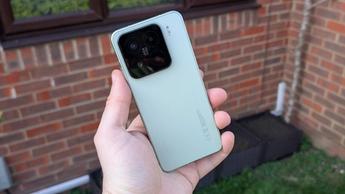
- Reseña sobre precio y disponibilidad del Xiaomi 15
- Reseña del Xiaomi 15: diseño y pantalla
- Reseña de la cámara del Xiaomi 15: desempeño en fotos y video
- Reseña de rendimiento del Xiaomi 15: velocidad, pruebas y experiencia en juegos
- Reseña de la batería y carga rápida del Xiaomi 15
- Reseña y características del software del Xiaomi 15
- Reseña del Xiaomi 15 y veredicto final
Nuestro equipo dedica incontables horas a analizar y revisar los productos, servicios y aplicaciones más recientes para ayudarte a tomar las mejores decisiones. Conoce más sobre nuestro proceso de pruebas, análisis y calificación.
El Xiaomi 15 es uno de los dos nuevos smartphones insignia presentados por este reconocido fabricante chino, revelado durante el Mobile World Congress 2025 en Barcelona. Aunque quizá no llame tanto la atención como el Xiaomi 15 Ultra, integra muchas de las mismas características destacadas e incluso, en algunos aspectos, puede superar a su hermano Ultra.
En especificaciones, el Xiaomi 15 presume de una pantalla grande y vibrante, cámaras de alta calidad optimizadas por Leica, una batería robusta de 5,240 mAh y el avanzado procesador Snapdragon 8 Elite. El teléfono funciona con Android 15 y la interfaz personalizada HyperOS 2 de Xiaomi, que le da un toque único en comparación con el software estándar de Google.
Como descubrirás en la reseña completa del Xiaomi 15 que encontrarás a continuación, este smartphone ofrece un rendimiento excelente, incluso sin la etiqueta "Ultra". Es una lástima que el dispositivo no esté más disponible, especialmente en México y el resto de Norteamérica. Sería interesante verlo competir directamente con otros teléfonos Android líderes que son más fáciles de encontrar en la región.
Reseña sobre precio y disponibilidad del Xiaomi 15
El Xiaomi 15 no está disponible para su compra en Estados Unidos, siguiendo la tendencia de la compañía de no lanzar oficialmente sus smartphones en ese país. Sin embargo, actualmente puedes comprar el Xiaomi 15 en el Reino Unido.
El precio inicia en £899 para la versión con 256 GB de almacenamiento, mientras que el modelo de 512 GB cuesta £999. Esto lo hace un poco más caro que el anterior Xiaomi 14, que comenzaba en £849, y también supera a otros smartphones de gama alta como el Samsung Galaxy S25 y el iPhone 16.
Toma en cuenta que esos modelos competidores usualmente ofrecen solo 128 GB de almacenamiento en sus versiones base. Al incluir 256 GB en el modelo básico del Xiaomi 15, el precio resulta competitivo considerando el espacio adicional que recibes.
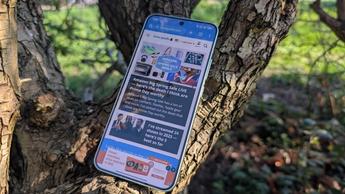
Reseña del Xiaomi 15: diseño y pantalla
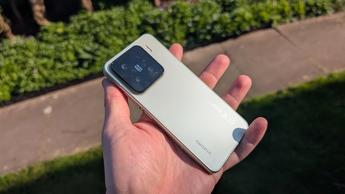
El Xiaomi 15 cuenta con una vibrante pantalla AMOLED de 6.36 pulgadas, con una nítida resolución de 1200 x 2670 y una fluida tasa de refresco adaptable de 1-120 Hz. Esta pantalla ofrece hasta 3,200 nits de brillo máximo y es compatible con HDR10+ y Dolby Vision para una experiencia visual impresionante. El sensor de huellas ultrasónico se encuentra convenientemente debajo de la pantalla, brindando acceso rápido y seguro.
Aunque el Xiaomi 15 utiliza Shield Glass de primera generación—introducido en la serie anterior—no ofrece el mismo nivel de resistencia que el modelo Ultra, el cual cuenta con la protección de pantalla más avanzada. Sin embargo, el Xiaomi 15 presume un marco de aluminio de alta resistencia y certificación IP68 contra agua y polvo, lo que garantiza durabilidad confiable en el uso diario.
Con un peso de solo 191 gramos, el Xiaomi 15 es notablemente más ligero que la versión Ultra. Su perfil de 0.31 pulgadas (7.87 mm) lo hace un poco más delgado, igualando el grosor de teléfonos insignia populares como el iPhone 16. Gracias a su diseño equilibrado, el Xiaomi 15 combina comodidad, durabilidad y tecnología de pantalla avanzada para ofrecer una experiencia premium en smartphones.
El Xiaomi 15 cuenta con una pantalla brillante y colorida que ofrece una experiencia visual muy agradable, especialmente al ver películas en streaming. Aunque su pantalla no es tan impactante como la del Xiaomi 15 Ultra, sigue siendo muy buena para el uso diario.
En cuanto al diseño, el Xiaomi 15 luce una elegante parte trasera de vidrio mate, aunque su módulo de cámara cuadrado y grande puede no ser del gusto de todos. El arreglo de cámaras más pequeño en el Xiaomi 15 es un detalle que se agradece, ya que mantiene el diseño estilizado y no es mucho más grande que el de otros teléfonos insignia populares como el iPhone 16 Pro Max. Sin embargo, la edición Silver Chrome del Xiaomi 15 Ultra destaca por su look retro, dándole un toque único y sofisticado.
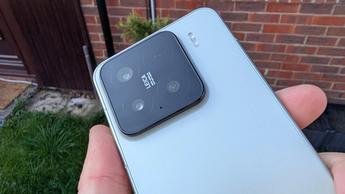
Reseña de la cámara del Xiaomi 15: desempeño en fotos y video
El Xiaomi 15 cuenta con un versátil sistema de triple cámara trasera, cada una con un sensor de 50 MP y óptica ajustada por Leica. El sistema incluye una lente principal estándar, una lente ultra gran angular para tomas más amplias y una lente telefoto que ofrece un zoom óptico de 2.6x. Al frente, hay una cámara selfie de 32 MP diseñada para autorretratos de alta resolución.
Si bien las especificaciones técnicas nos dan una idea de las capacidades de la cámara, el desempeño en el mundo real cuenta la historia completa. Para ver cómo se compara el Xiaomi 15, lo enfrenté contra el Google Pixel 9 Pro, uno de los mejores teléfonos con cámara actualmente. Aunque el Xiaomi 15 Ultra previamente superó al Pixel en algunos escenarios, veamos cómo se desempeña el Xiaomi 15 estándar.
Comenzando con la cámara principal, las fotos del Xiaomi 15 suelen tener un tono más frío, mientras que el Pixel 9 Pro produce imágenes más cálidas y con tintes anaranjados. Ambos capturan el efecto del atardecer, pero la foto del Xiaomi parece un poco más fiel a la realidad, aunque algo apagada. La coloración más realista y los detalles más nítidos le dan ventaja al Xiaomi 15 para capturar texturas finas.
En interiores, el Xiaomi 15 tomó imágenes más brillantes y definidas, aunque mostró dificultades para reproducir los colores con precisión, haciendo que los objetos se vean más amarillos de lo que son y perdiendo algunos detalles reflectantes. Por su parte, el Pixel 9 Pro mostró los blancos de manera más precisa y logró capturar reflejos y pequeños detalles, aunque sus tomas de cerca fueron un poco más borrosas.
Al probar las cámaras ultra gran angulares, ambos teléfonos produjeron imágenes más oscuras de lo esperado, con más sombra de la que había en realidad. Las fotos del Xiaomi 15 resultaron un poco más claras, pero la diferencia fue mínima. Al observar de cerca, las fotos del Pixel 9 Pro mostraron más desenfoque y pixelación en los bordes, mientras que el Xiaomi 15 mantuvo mejor claridad.
Con la lente telefoto, los resultados iniciales parecían similares. Las imágenes del Pixel tenían un tono más cálido y capturaban el resplandor del atardecer, pero las fotos del Xiaomi 15 perdieron algo de detalle, especialmente al hacer zoom. Las huellas en la tierra y los objetos lejanos se veían más borrosos en comparación con el Pixel, que logró mantener más detalle tanto en el paisaje como en la vegetación circundante.
A 2x y 5x de aumento, el Pixel 9 Pro continuó entregando imágenes más brillantes y nítidas, facilitando ver detalles lejanos como los ladrillos de una torre o el follaje. Las imágenes del Xiaomi 15, aunque aceptables, se veían más apagadas y con menos detalle a mayores niveles de zoom.
El rendimiento de las selfies fue mixto. El Xiaomi 15 produjo selfies más brillantes y con menos destellos de lente, pero las imágenes se veían apagadas y artificiales, con un efecto de suavizado de piel muy notorio. El Pixel 9 Pro evitó los filtros de embellecimiento, pero entregó resultados más oscuros y granulosos, y tuvo problemas con la luz de fondo intensa.
El modo retrato enfrentó retos similares. Los retratos del Pixel 9 Pro tenían menos ruido, pero las imágenes del Xiaomi 15 se veían apagadas. El efecto bokeh (desenfoque de fondo) fue más consistente en el Xiaomi, aunque el del Pixel lucía más natural, pese a cierto desenfoque en los bordes de la ropa. Ambas cámaras tuvieron dificultad para reproducir con precisión las texturas en algunas áreas.
En condiciones de poca luz, ambos teléfonos mostraron fortalezas y debilidades. El Xiaomi 15 tuvo problemas con la precisión de color, haciendo que las flores amarillas se vieran pálidas, pero logró capturar más detalle en el fondo. El Pixel 9 Pro entregó un sujeto más nítido, pero perdió algunos detalles finos en las áreas oscuras.
En general, el Xiaomi 15 ofrece un sistema de cámaras sólido con una calidad fotográfica impresionante en todas sus lentes. Aunque no iguala el desempeño de su versión Ultra, sigue entregando excelentes imágenes para la fotografía cotidiana. Sin embargo, la función predeterminada de suavizado facial resta naturalidad a los retratos y puede no ser del agrado de todos los usuarios.
Reseña de rendimiento del Xiaomi 15: velocidad, pruebas y experiencia en juegos
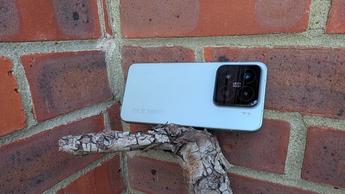
Al igual que su versión Ultra y muchos otros smartphones Android de gama alta lanzados este año, el Xiaomi 15 funciona con el procesador Snapdragon 8 Elite. La cantidad de memoria depende de la opción de almacenamiento que elijas: el modelo de 256 GB viene con 12 GB de RAM, al igual que algunas versiones de 512 GB, mientras que otras de 512 GB y todas las de 1 TB ofrecen 16 GB de RAM. Para esta reseña, probé el Xiaomi 15 de 512 GB con 16 GB de RAM.
El Snapdragon 8 Elite es reconocido por ofrecer un rendimiento de primer nivel, y el Xiaomi 15 Ultra ya ha obtenido resultados impresionantes en pruebas de rendimiento. Entonces, ¿cómo se compara el Xiaomi 15?
En la prueba de un solo núcleo de Geekbench 6, el Xiaomi 15 obtuvo un promedio de 2,972 puntos, apenas por detrás del 15 Ultra. Sin embargo, superó al Ultra en las pruebas multinúcleo, logrando una puntuación de 9,330 frente a los 9,064 del Ultra. La misma tendencia se observó al comparar los resultados de Xiaomi con el Samsung Galaxy S25, mientras que el iPhone 16 Pro invirtió la situación al tener mejores puntuaciones de un solo núcleo pero menor desempeño en multinúcleo.
En cuanto a gráficos, el Xiaomi 15 superó las expectativas. En la prueba Solar Bay Unlimited de 3DMark, superó a la mayoría de sus competidores con una tasa de cuadros promedio de 43.9, encabezando la lista en puntuación general. Solo el Galaxy S25 se acercó, alcanzando una puntuación de 11,412 y una tasa de 43.4 fps, mientras que el Xiaomi 15 logró 11,565 puntos y 43.9 fps.
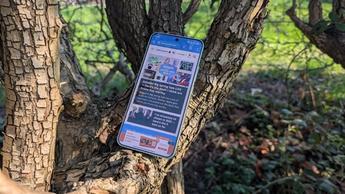
El Xiaomi 15 obtuvo resultados impresionantes en nuestra prueba de transcodificación de video, convirtiendo un video 4K a 1080p en solo 40 segundos. Esto es 8 segundos más rápido que el Xiaomi 15 Ultra y notablemente más veloz que el Galaxy S25 (53 segundos) y el OnePlus 13 (1 minuto con 1 segundo). Sin embargo, es importante mencionar que esta prueba suele favorecer a los dispositivos de Apple, ya que el iPhone 16 Pro completó la misma tarea en apenas 21 segundos.
En cuanto a juegos móviles, el Xiaomi 15 brindó una experiencia fluida y muy responsiva, incluso con los gráficos y la tasa de cuadros configurados al máximo. Durante las partidas, el dispositivo se mantuvo fresco, incluso con el brillo de la pantalla al tope.
Lo más destacado es que los personajes en pantalla y sus movimientos se mantuvieron consistentes, incluso a distancia—una mejora notable respecto al Xiaomi 15 Ultra. Esto demuestra que el mejor desempeño gráfico del Xiaomi 15 no solo se refleja en pruebas de referencia, sino que también ofrece beneficios reales durante el uso cotidiano.
Reseña de la batería y carga rápida del Xiaomi 15
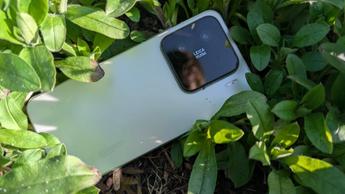
El Xiaomi 15 cuenta con una robusta batería de 5,240 mAh, ofreciendo mayor capacidad que muchos smartphones insignia, que suelen alcanzar un máximo de 5,000 mAh. Aunque el tamaño de la batería es importante, la duración total depende de varios factores. Afortunadamente, el Xiaomi 15 demuestra una autonomía impresionante.
En nuestra prueba de batería, reproducimos un video de YouTube a 50% de brillo y resolución 1080p durante tres horas. Tras este periodo, el Xiaomi 15 solo había consumido el 10% de su batería. Para comparar, el Xiaomi 15 Ultra, que tiene una batería y una pantalla más grandes, perdió el 11%. El Xiaomi Mix Fold 4 bajó un 14%, y el Google Pixel 9 Pro tuvo una reducción del 21% en la misma prueba.
El Xiaomi 15 es compatible con carga rápida de hasta 90W usando un cargador adecuado, que se vende por separado. Incluso con un cargador de 67W, el teléfono ofrece velocidades de carga sobresalientes. En las pruebas, el cargador de 67W restauró el 46% de la batería en solo 15 minutos y alcanzó el 81% en 30 minutos. El dispositivo se cargó por completo de 0% a 100% en aproximadamente 49 minutos.
Un multímetro USB-C indicó que las velocidades de carga alcanzaron un pico justo por debajo de 60W y se estabilizaron entre 35 y 40W durante la primera media hora. Después de 30 minutos, la velocidad bajó de 20W, lo cual es típico en baterías de litio para proteger su vida útil a largo plazo.
En general, el Xiaomi 15 destaca por su excelente autonomía y capacidades de carga rápida, convirtiéndose en una gran opción para quienes buscan un smartphone con un rendimiento superior de batería.

Reseña y características del software del Xiaomi 15
El Xiaomi 15, al igual que el Xiaomi 15 Ultra, funciona con HyperOS 2, una versión personalizada de Android 15 desarrollada por Xiaomi. Ambos dispositivos están programados para recibir cuatro actualizaciones principales del sistema Android, llevándolos hasta Android 19, además de seis años de actualizaciones de seguridad. Aunque algunas marcas ahora ofrecen hasta siete años de actualizaciones para sus teléfonos insignia, el compromiso de Xiaomi sigue destacando frente a muchos otros fabricantes de Android, donde el soporte suele terminar después de cuatro años.
Si prefieres una experiencia Android con un toque de diseño inspirado en Apple, vale la pena probar HyperOS 2. El software y la interfaz de usuario mantienen la esencia de Android, pero ciertas funciones—como la separación entre el menú de notificaciones y un centro de control dedicado—recuerdan a iOS.
Xiaomi también ha incursionado en funciones impulsadas por inteligencia artificial, una tendencia común entre las marcas de smartphones. Algunas herramientas de IA, como las mejoras en la edición de fotos, son fáciles de encontrar, mientras que otras están más ocultas dentro del sistema.

Los subtítulos impulsados por IA y la traducción en tiempo real me llamaron de inmediato la atención como funciones muy interesantes para probar. Sin embargo, tanto en el Xiaomi 15 como en el 15 Ultra, me resultó difícil acceder a estas herramientas sin ayuda.
El intérprete con IA no me pareció muy diferente a otras aplicaciones de traducción. La inteligencia artificial funciona de manera tan fluida en segundo plano que su presencia apenas se nota. Aunque el hecho de que la IA funcione en segundo plano puede ser una ventaja, aún hace falta que este software de traducción ofrezca funciones únicas que lo distingan de la competencia.
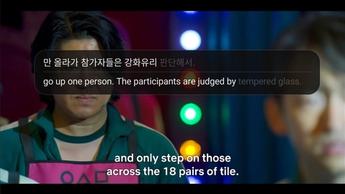
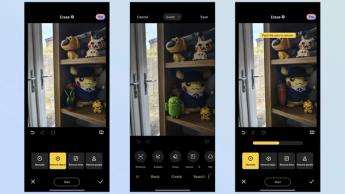
Los subtítulos generados por IA funcionaron bien... cuando funcionaban. Sin embargo, la tecnología tuvo dificultades para manejar todos los idiomas por igual. Por ejemplo, ver El juego del calamar en su idioma original, coreano, fue casi imposible, y los subtítulos proporcionados no eran tan precisos como los de las principales plataformas de streaming.
Por otro lado, la IA logró traducir una transmisión en vivo de noticias en español con una facilidad impresionante, incluso manteniéndose al ritmo del presentador, que hablaba muy rápido—algo complicado para cualquier herramienta de traducción en tiempo real.
Las funciones de edición con IA en el Xiaomi 15 son algo inconsistentes. Al igual que en el Xiaomi 15 Ultra, la función de borrar con IA muchas veces sólo reemplazaba el objeto seleccionado por una versión un poco más pequeña, en lugar de eliminarlo por completo. Sin embargo, al pintar manualmente sobre el objeto aumentaban las probabilidades de eliminarlo completamente, haciendo la herramienta más efectiva si se usaba con cuidado.

La expansión de imágenes con IA puede ser impresionante, pero el resultado final depende de lo que quieras mejorar. Por ejemplo, cuando agregué más fondo a una foto nocturna de un narciso en el pasto, los cambios fueron tan sutiles que era difícil notar que se había usado IA. Sin embargo, cuando intenté expandir una exhibición compleja de Lego, los resultados no fueron tan buenos.
Mantén expectativas realistas, especialmente si usas IA para trabajar con imágenes más complicadas o detalladas.
Las funciones para cambiar la vista del cielo y eliminar reflejos en las ventanas de las fotos funcionaron mejor de lo esperado. La herramienta para eliminar el cielo no solo lo reemplazó, sino que también ajustó el tono general de la foto para lograr un aspecto más natural. Aunque algunos de estos cambios no siempre fueron de mi agrado, la herramienta de edición logró un resultado más realista y coherente.
En general, las herramientas con IA disponibles en el Xiaomi 15 funcionan de manera impresionante. Sin embargo, su efectividad se ve limitada por lo complicado que es encontrarlas dentro de la interfaz del teléfono, un reto que no es exclusivo de los dispositivos Xiaomi ni de HyperOS.
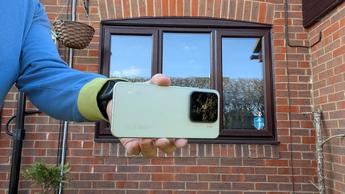
Reseña del Xiaomi 15 y veredicto final
El Xiaomi 15 es un smartphone impresionante, aunque suele quedar opacado por el más avanzado Xiaomi 15 Ultra, que presume de un diseño y rendimiento superiores, aunque a un precio más elevado. Aun así, el Xiaomi 15 estándar destaca por su excelente duración de batería, alto desempeño en pruebas de rendimiento y cámaras confiables.
Las funciones de inteligencia artificial del teléfono aportan un toque innovador, aunque podrían ser más accesibles, especialmente aquellas que no se enfocan en la edición de fotos. Mientras que en muchos smartphones puede ser complicado encontrar las herramientas de IA, mejorar la experiencia de usuario en este aspecto podría ayudar a que más personas aprovechen la tecnología HyperAI de Xiaomi.
Un aspecto importante a considerar es la limitada disponibilidad del Xiaomi 15, sobre todo en Estados Unidos, donde no se vende oficialmente. Sin embargo, si logras conseguir uno, tendrás en tus manos un equipo confiable que cumple con lo esencial y ofrece un rendimiento sólido en todos los aspectos.
